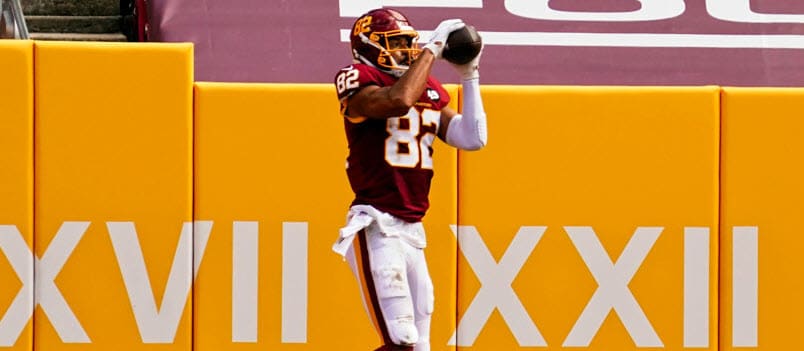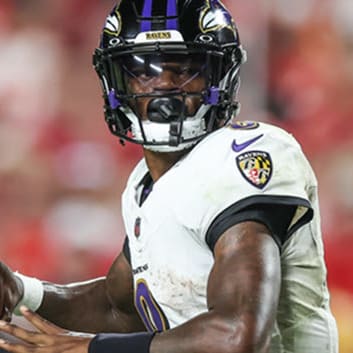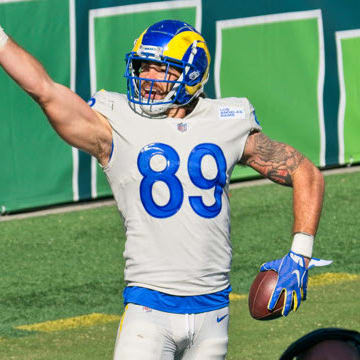This article is part of our Best Ball Strategy series.
With final cutdowns concluded we finally know for sure what players these teams will carry in the NFL season, and with that we can fine-tune our projections. Some of those last-second adjustments will age better than others, and in this final week there will be new opportunities to target in Underdog Best Ball drafts as the markets resettle. You can read about the best emerging prices in this article here.
This article will look at five of the less favorable prices as he we head into the final week.
Listed in descending order of Underdog ADP:
Austin Ekeler, RB, LAC (11.1 Underdog ADP)
Ekeler is a great player in both real life and fantasy football, so there's no reason to specifically avoid him in Underdog best ball drafts. It would be ideal to get him later than his present ADP, however, because at the current average price he doesn't merit more than occasional diversification picks. It'd be a different matter if this were PPR scoring, but Underdog uses 0.5PPR. While Ekeler is great in any format, he decisively loses ground with the half-point deduction on each catch.
Ekeler is small at around 5-foot-9, 200 pounds, and he'll never profile for inside running work on any noteworthy volume. This is why he has just nine rushing touchdowns despite otherwise producing well on 401 career carries (1,901 yards, 4.7 YPC). At an 11.1 ADP Ekeler is going ahead of some of the NFL's most imposing runners – Nick Chubb (14.9 Underdog ADP) and Jonathan Taylor (15.1 Underdog ADP) both gain ground in 0.5PPR scoring, and Antonio Gibson (16.7 Underdog ADP) figures to do a lot of running and pass catching both in 2021. Chubb (16.8) and Taylor (15.8) both scored more fantasy points per game than Ekeler (13.8) in 0.5PPR last year, and Gibson (13.4) was close even though it was his first full season playing running back.
CeeDee Lamb, WR, DAL (25.8 Underdog ADP)
Lamb is exactly the same deal as Ekeler – unquestionably great player, and one worth pursuing shares of on Underdog best ball – just one who appears to be going too high at times. Great as Lamb is, the case to rank him ahead of Terry McLaurin (27.9 Underdog ADP) and Allen Robinson (29.3 Underdog ADP) is maybe a bit thin. Not just those two, but Lamb is extremely close in the ADP to Justin Jefferson (22.7 Underdog ADP) and A.J. Brown (22.7 Underdog ADP), and when a player is within five picks of another in the ADP it usually means they go ahead of the higher-ranked one at least occasionally.
Based on last year's production Lamb would likely need to play at least 900 snaps to approach 90 receptions, and neither his catch rate (66.7 percent) nor YPT (8.4) are easy to improve upon in a high-volume role. If he were to catch 90 receptions at 12.5 yards per catch that would be 1,125 yards – a figure McLaurin eclipsed in 15 games last year. Robinson, meanwhile, is averaging 100 receptions per 16 games while dealing with Mitch Trubisky and Nick Foles the last two years. There's reason to believe McLaurin and Robinson – the clear alphas in their offenses – will continue to play significantly higher snap counts than Lamb.
If recent trends between Lamb, McLaurin and Robinson hold then Lamb would likely need an injury to Amari Cooper or Michael Gallup to outproduce McLaurin or Robinson. McLaurin and Robinson have not just higher snap counts but also greater shares of their offenses, both of which stand to benefit from changes at quarterback this offseason. If those quarterbacks improve the passing production from which McLaurin and Robinson claim their shares, then they should outproduce Lamb even if Cooper or Gallup gets hurt. If Cooper and Gallup don't get hurt, then Lamb might need one of his high-range efficiency outcomes just to stay within range of McLaurin and Robinson.
Miles Sanders, RB, PHI (51.0 Underdog ADP)
Sanders is a very good pure runner, and when he has the ball he'll cause worry for any defense. He's less skilled as a pass catcher, however, and that might limit the number of ways the Eagles can get Sanders the ball in the first place. That's already true generally, but that constricting trend gets even worse when you account for Boston Scott and Kenny Gainwell, two running backs who are uniquely competent as pass catchers. Even a good pass-catching back would be vulnerable to Scott and Gainwell, and Sanders is more likely a below average one.
If Sanders can only do his damage with carries, then he's at risk of disappearing from games when the Eagles fall behind. The Eagles are at more risk of that than most teams. Indeed, the Eagles grade poorly at every position aside from tight ends and defensive line. Not just that, but even when the Eagles are fortunate enough to be able to lean on the run game Jalen Hurts will claim a much bigger share of that carry count than prior Eagles quarterbacks did. Sanders probably shouldn't be going around Gus Edwards (49.5 Underdog ADP) or Darrell Henderson (59.9 Underdog ADP).
Logan Thomas, TE, WAS (81.0 Underdog ADP)
Thomas should be useful this year, but his ADP has been too high all offseason and now for some reason it's gone even higher. At 81.0 Thomas is going earlier than Kenny Golladay, Justin Herbert, Aaron Rodgers, Michael Gallup, Tom Brady and other big name fantasy targets. This calls for a higher burden of proof, but aside from below baseline 2020 target volume and athletic testing from 7.5 years ago there's nothing tangible in Thomas' player profile to this point.
Thomas is definitely a good athlete, but his skill level still showed indications of lagging even last year. Washington completed 67.9 percent of its targets last year at 6.6 yards per target, but Thomas actually dragged it down by catching 65.5 percent of his passes at 6.1 yards per target. His 110 targets were not actually productive, and any coach taking inventory is thinking about how to decrease that number. Moreover, those 110 targets occurred with Terry McLaurin missing a game and the second-leading target being fellow below-baseline target J.D. McKissic, who tied Thomas with 110.
In an offense where Thomas and McKissic split 220 targets, both of them giving returns below the broader team baseline, would you conclude those usages were assigned on the basis of merit? Rather than taking the target count for a measure of skill in this case, we might want to consider the possibility it's instead a measure of dysfunction. It was hurting the offense, but they couldn't stop doing it anyway.
It's true that Ryan Fitzpatrick will help Thomas' efficiency and should provide a profound overall contrast to the pointless play of Alex Smith, but if Fitzpatrick ends the dysfunction then so end the conditions that were necessary for Thomas to acquire the target share he did in 2020. Curtis Samuel, Adam Humphries and Dyami Brown will draw targets at a much more rapid rate than Cam Sims, Isaiah Wright and Dontrelle Inman did. Plus, Thomas' 2020 fantasy production wasn't even that good in the first place – 72 catches for 670 yards and six touchdowns isn't impressive, it was just a bad year for the position. Those numbers aren't even TE1 viable in a lot of past seasons.
Devin Singletary, RB, BUF (132.0 Underdog ADP)
Singletary offers not much floor and no upside. He can disappear from any game and, when he does become apparent, skill and structure limitations dictate a hard ceiling on any volume he accumulates. A player like Singletary can be useful at an exceptionally cheap price – let's say the 15th round or later – but in the 12th you're just weighing yourself down. It's not really his fault -- the Bills throw too much to suit Singletary and when they do run Josh Allen claims too much of that too.
Singletary and Zack Moss combined for 1,532 yards and seven touchdowns from scrimmage last year. That pie is too small to split, and Singletary isn't good enough to bet on claiming enough of it.











